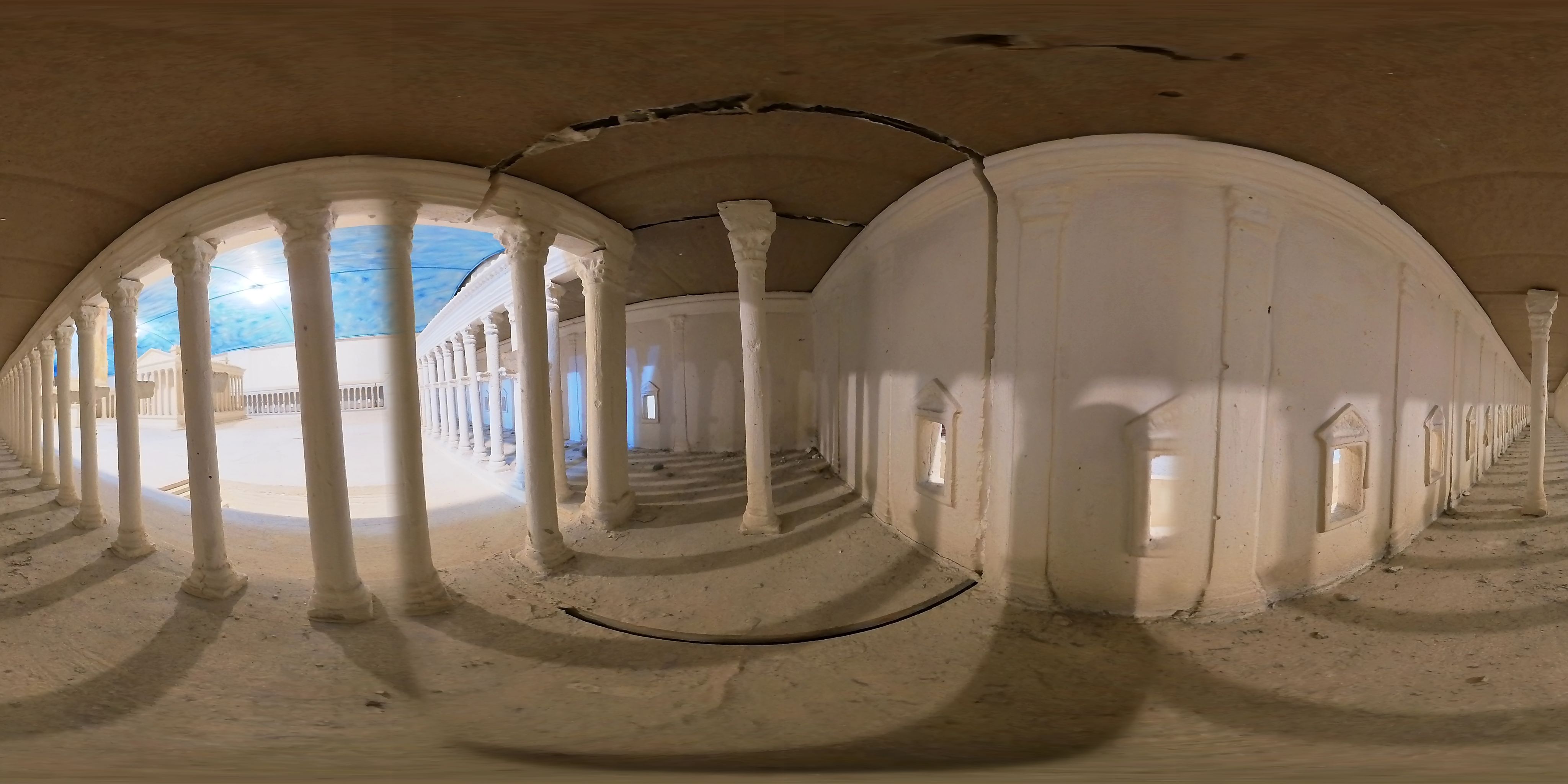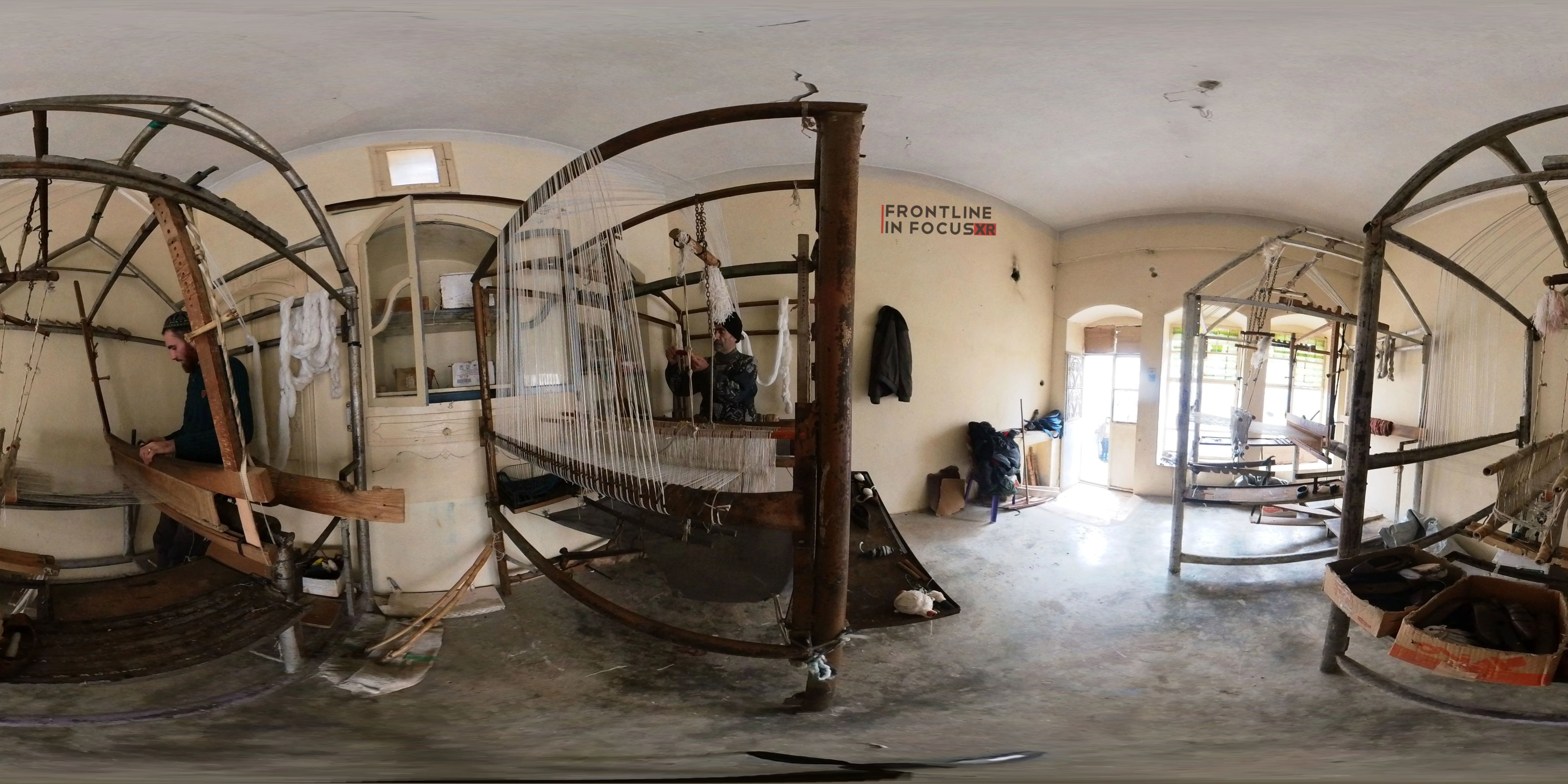Preserving Heritage:
Syria's Cultural Resilience in Times of War (VR stories)
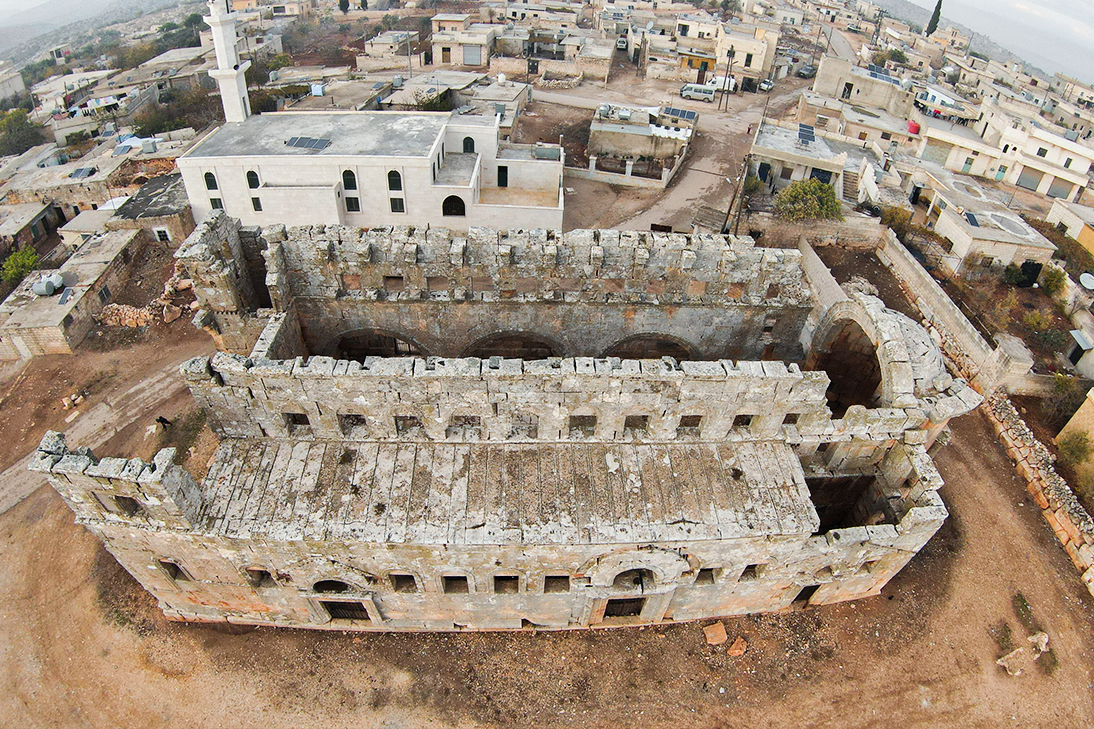
Have you ever witnessed a city that gracefully relocates its iconic landmarks from one district to another? Have you ever been entranced by the rhythmic melody of looms, skillfully weaving the enduring tales of our forebears, while their wisdom shapes profound narratives in the hearts of their progeny?
In this report, we shall escort you to the capital, Damascus, where you shall behold sculptures crafted by a celebrated artist, undeterred by the persisting conflict that has besieged his homeland for over 12 years, steadfastly persevering in his artistic endeavors.
We will proceed to northwestern Syria, where the Kurdish musician, Jumaa, strives to establish his presence amid the echoing melodies of his ancestral Kurdish instrument, the Buzuq.
Our journey in this report will conclude in historical regions and once-thriving cities where European excavation missions were once active. However, today, they have transformed into havens for displaced populations.
The stories were filmed with 360-degree cameras and can be viewed in virtual reality using virtual reality goggles.
Keeping The History of Palmyra Alive

Before the war, European missions in Palmyra were dedicated to archaeological exploration and preservation, uncovering the city's rich history. After the war, these missions turned their focus towards documenting and safeguarding what remained of this cultural treasure, working amidst the conflict's challenges.
Palmyra, situated in the heart of the Syrian desert, was a thriving crossroads of trade and culture during antiquity. Its well-preserved ruins, including the grand Temple of Bel and the iconic Arch of Triumph, offered a glimpse into the city's rich history as a hub for commerce and the meeting of diverse civilizations.
Tragically, Palmyra's historical treasures became a casualty of conflict, suffering extensive damage and destruction during the Syrian civil war. However, international efforts have been underway to restore and safeguard what remains of this UNESCO World Heritage Site,
this story highlights the extraordinary efforts of individuals who meticulously sculpted a model of Palmyra. For an immersive experience, VR headset users can step into their world, while others can still explore this remarkable endeavor in full 360 degrees.
From my grandfather to my son, The Loom
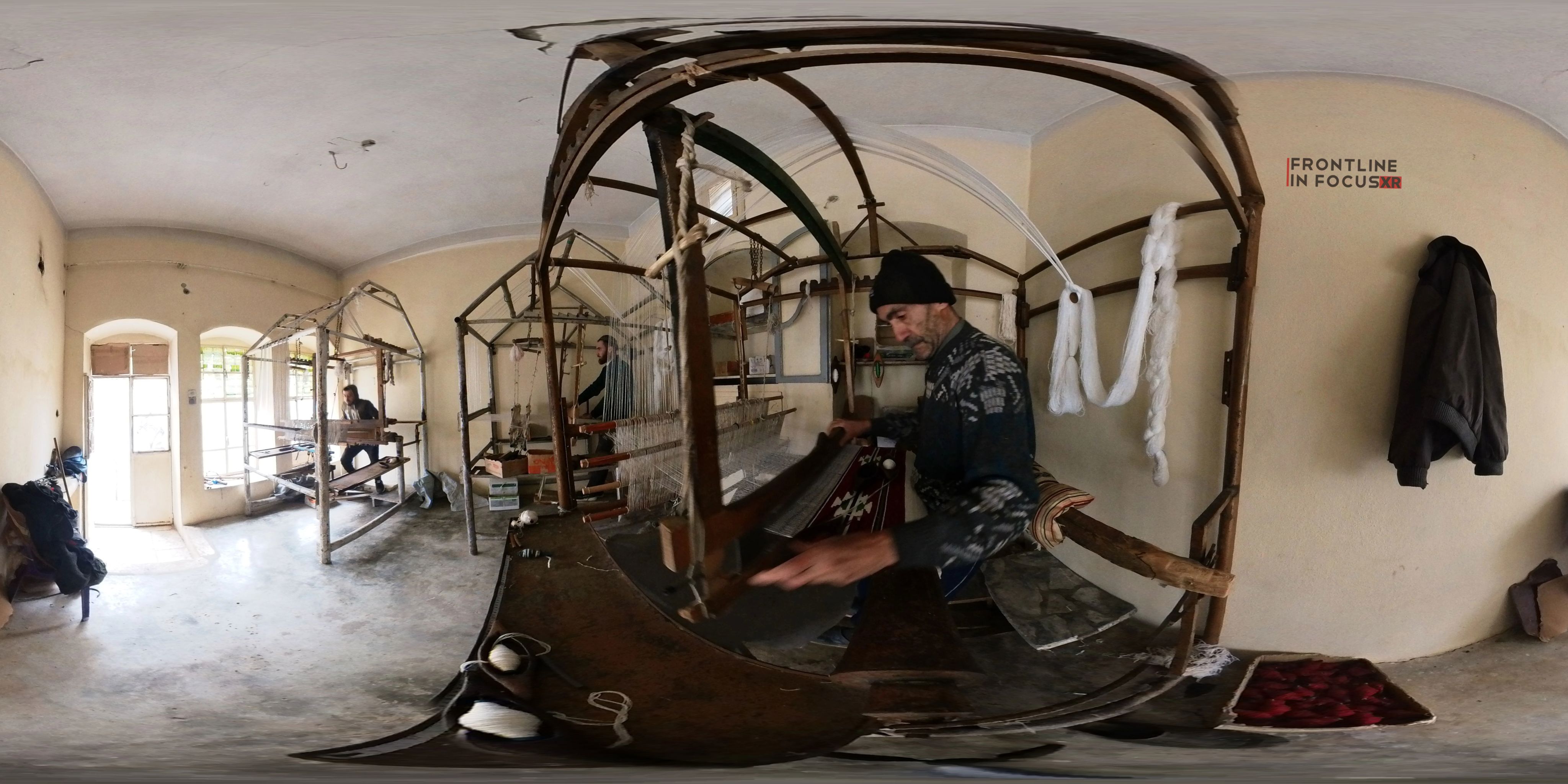
Continuing traditional crafts like looming amidst the challenges of Syria's frontlines and war is a testament to the unwavering determination of the people to preserve their cultural heritage. These artisans, despite adversity, strive to keep their age-old traditions alive, symbolizing resilience in the face of conflict and an enduring commitment to their cultural legacy.
Looming, a timeless craft that has transcended generations, embodies the artistry of weaving threads into intricate tapestries of culture and history. With rhythmic precision, artisans deftly maneuver the shuttle, crafting textiles that breathe life into traditions. Each pass of the shuttle is a thread of connection to our ancestral past, a testament to the enduring spirit of craftsmanship. In the warp and weft of the loom, we discover the fabric of culture, a vibrant tapestry that tells the story of a people's identity, resilience, and their unwavering commitment to keeping this ancient craft alive, even in the face of adversity.
For an immersive experience, VR headset users can step into their world, while others can still explore this remarkable endeavor in full 360 degrees.
The EU's involvement in supporting traditional crafts like weaving in Syria is through projects aimed at providing vocational training and economic opportunities for Syrian refugees and displaced individuals.
For instance, the EU has funded initiatives that partner with local organizations and artisans to set up weaving workshops in refugee camps and host communities. These workshops teach weaving skills to refugees, including women who may have limited access to formal employment opportunities. Participants are trained to use looms and create various textile products, such as rugs, clothing, and home decor.
These projects not only empower displaced individuals with valuable skills but also offer a source of income, promoting economic self-sufficiency. Additionally, they contribute to preserving Syria's rich weaving heritage and cultural traditions.
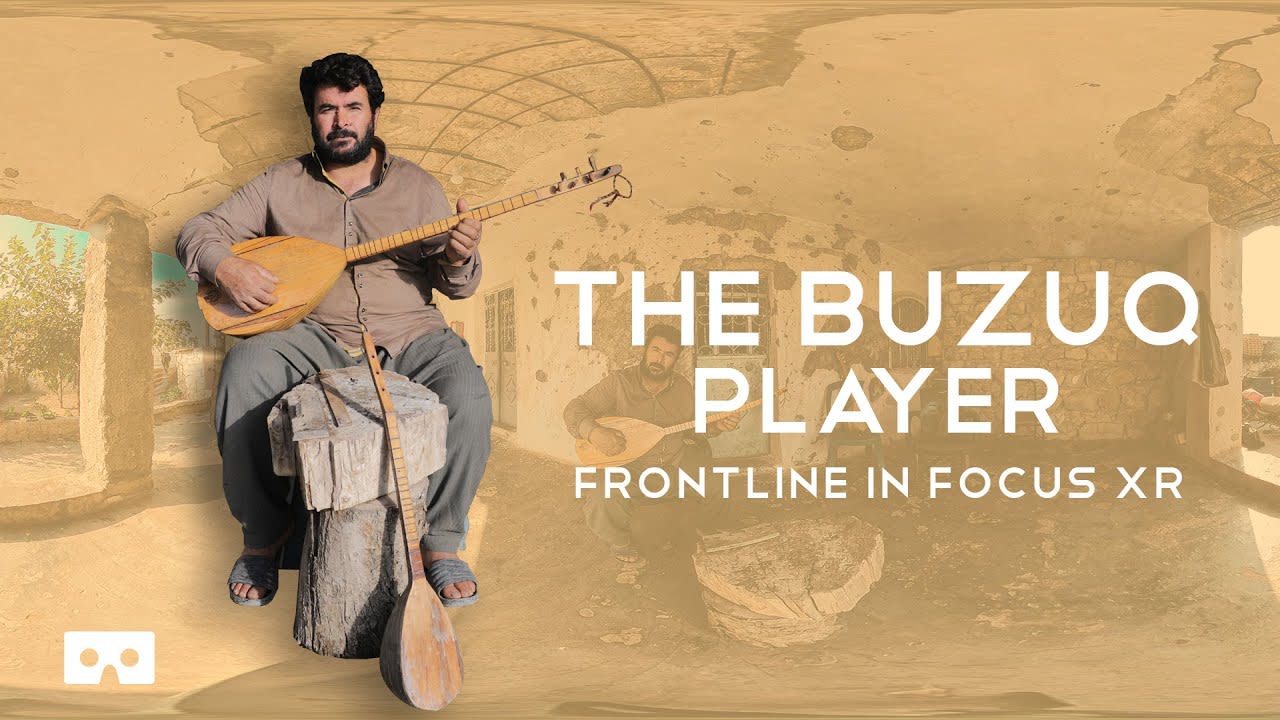
EU supports cultural exchange programs that bring Syrian musicians, including buzouk players, to European stages. Jumaa wasn't among them, but he still believes in the importance of this instrument, and his love for it remains unwavering.
For an immersive experience, VR headset users can step into their world, while others can still explore this remarkable endeavor in full 360 degrees.
Join us on this exclusive tour, commencing in Damascus at an art gallery showcasing the remarkable works of renowned sculptor Mustafa Ali. Our journey then takes us to Northwestern Syria, where we explore the ancient cities and one of the world's oldest churches. These historic sites were once locations of EU missions.
For an immersive experience, VR headset users can step into their world, while others can still explore this remarkable endeavor in full 360 degrees.
An Old House Gallery in Old Damascus:
Harem Castle
Qalb Lozeh: A church that influenced Notre-Dame’s architecture
Ancient sites shelter syria's displaced


